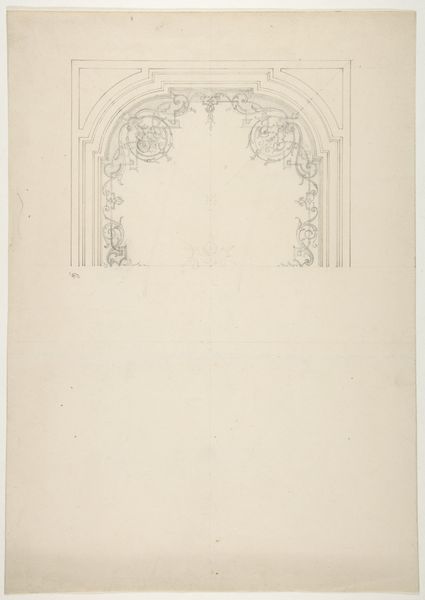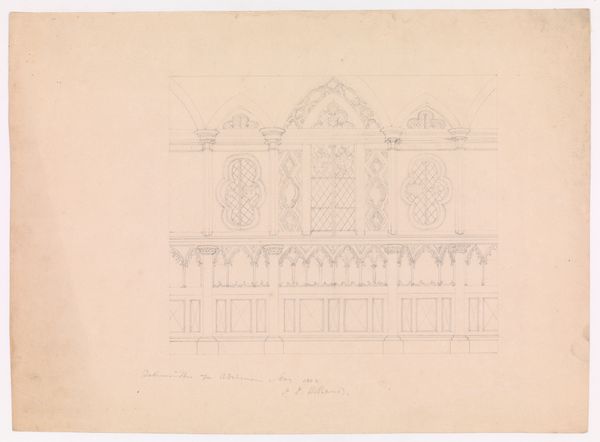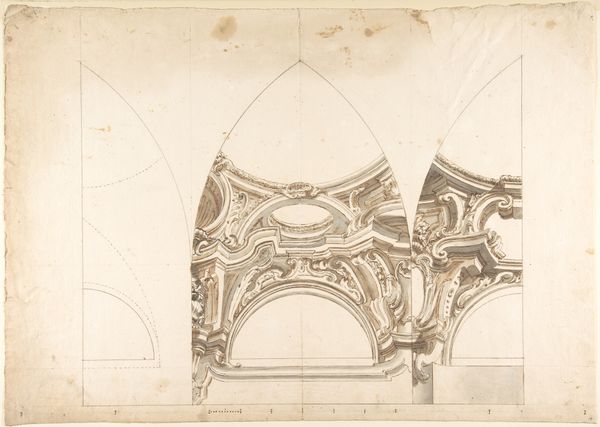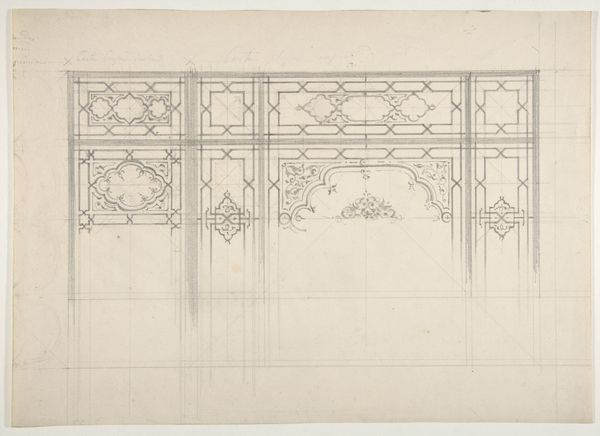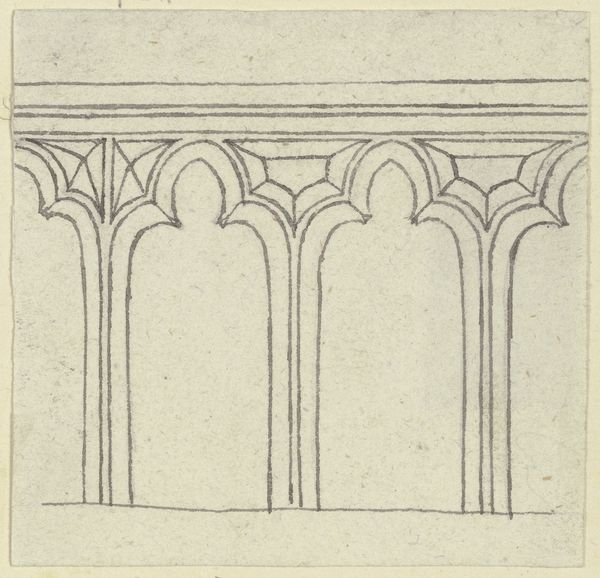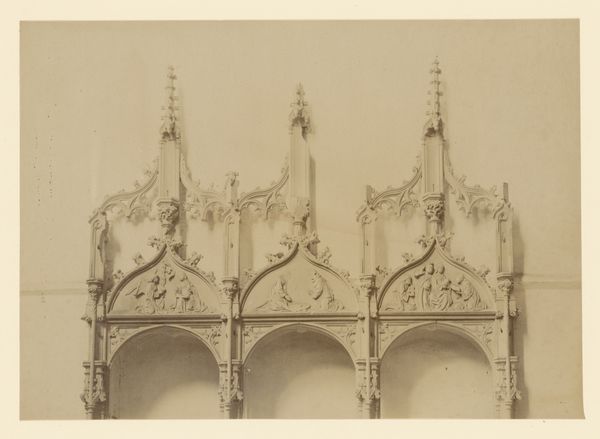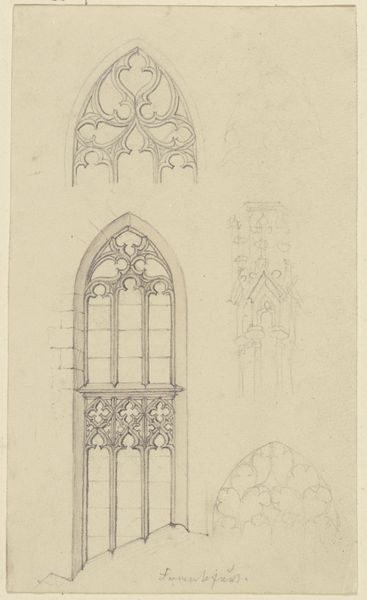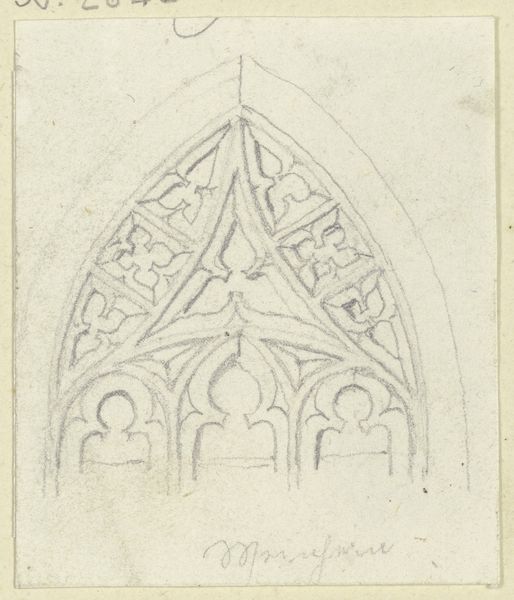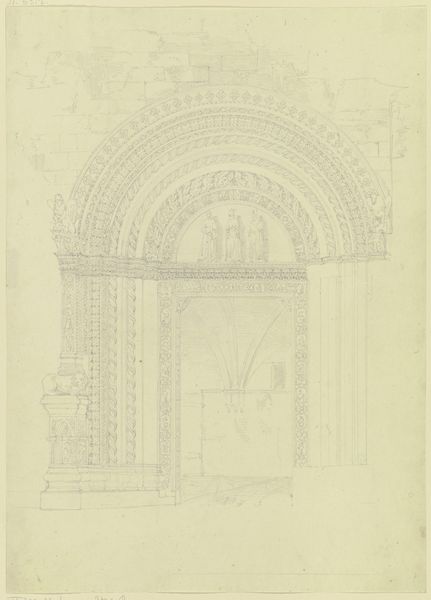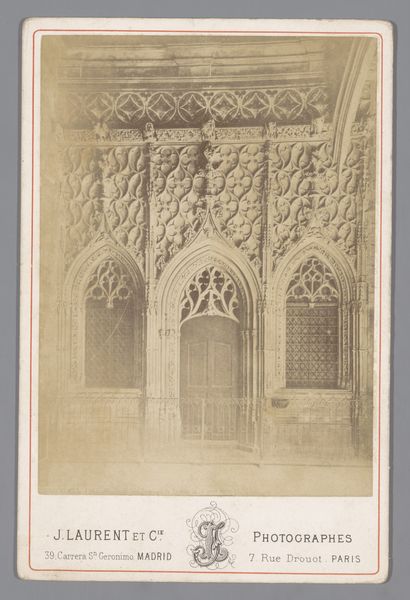
Designs for decorated pendentives 1830 - 1897
0:00
0:00
drawing, print, pencil, architecture
#
drawing
# print
#
etching
#
geometric
#
pencil
#
academic-art
#
architecture
Dimensions: Overall: 10 1/2 x 14 3/4 in. (26.7 x 37.5 cm)
Copyright: Public Domain
Curator: Here we have Jules-Edmond-Charles Lachaise’s “Designs for Decorated Pendentives,” dating roughly from 1830 to 1897. It's rendered in pencil, etching, and print, all on paper. Quite the multi-faceted creation! Editor: It looks like a forgotten corner of a palace! There's something melancholy about the pale, precise lines—like peering into a memory. It whispers of grandeur, but the faded quality evokes loss. Curator: Indeed, Lachaise's piece offers a glimpse into the architectural dreams of the 19th century. Trained in the Beaux-Arts tradition, it’s no surprise he’s interested in not just structure, but the decorative flourishes within it. One can see echoes of classical ornamentation mixed with a growing appreciation for detail that marked that era. These designs are particularly interesting because of the ways that architecture was publicly funded; the look of buildings helped display not just cultural tastes, but state power and cultural values. Editor: It makes me think about how ambition itself is so temporal. Those geometric details meant to last eons and become symbols of everlasting power ultimately return to dust… Or at least end up on a museum wall for our reflective consideration. I suppose, as an artist, you pour yourself into creating the unchangeable, even though change itself is our only reality. Curator: The "academic art" influence is strong here. Lachaise trained under masters like Jean-Louis Pascal, soaking in this precise, classically informed approach. His journey in itself is compelling: starting as an apprentice engraver, then refining his craft at the École des Beaux-Arts, a testament to artistic and social mobility—or the hope of it—through mastering established artistic canons. Editor: And it's strange, isn't it, to capture something designed to house the most overwhelming spiritual experiences, the holiest of holies. The drawing turns something transcendent into something technical—an equation rather than a revelation. What was once meant to elevate and inspire ends up meticulously diagrammed. Curator: It raises interesting questions about the artistic process. What do we glean from these meticulous designs versus the finished structure? Do these designs distill the intent or somehow demystify the art itself? Editor: Perhaps both. It’s a beautiful, wistful blueprint, inviting us to ponder the distance between conception and concrete reality. A dance between precision and pathos.
Comments
No comments
Be the first to comment and join the conversation on the ultimate creative platform.

